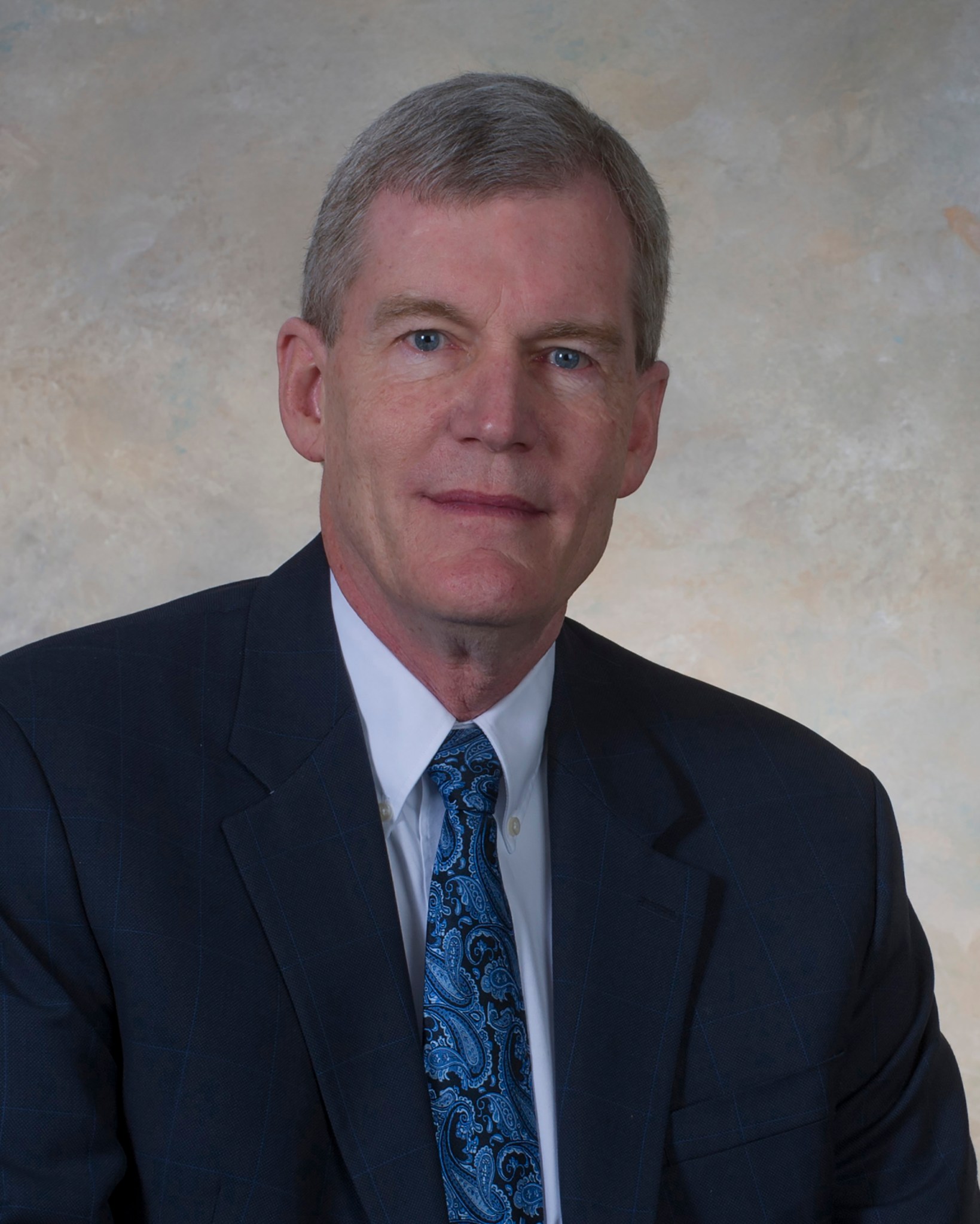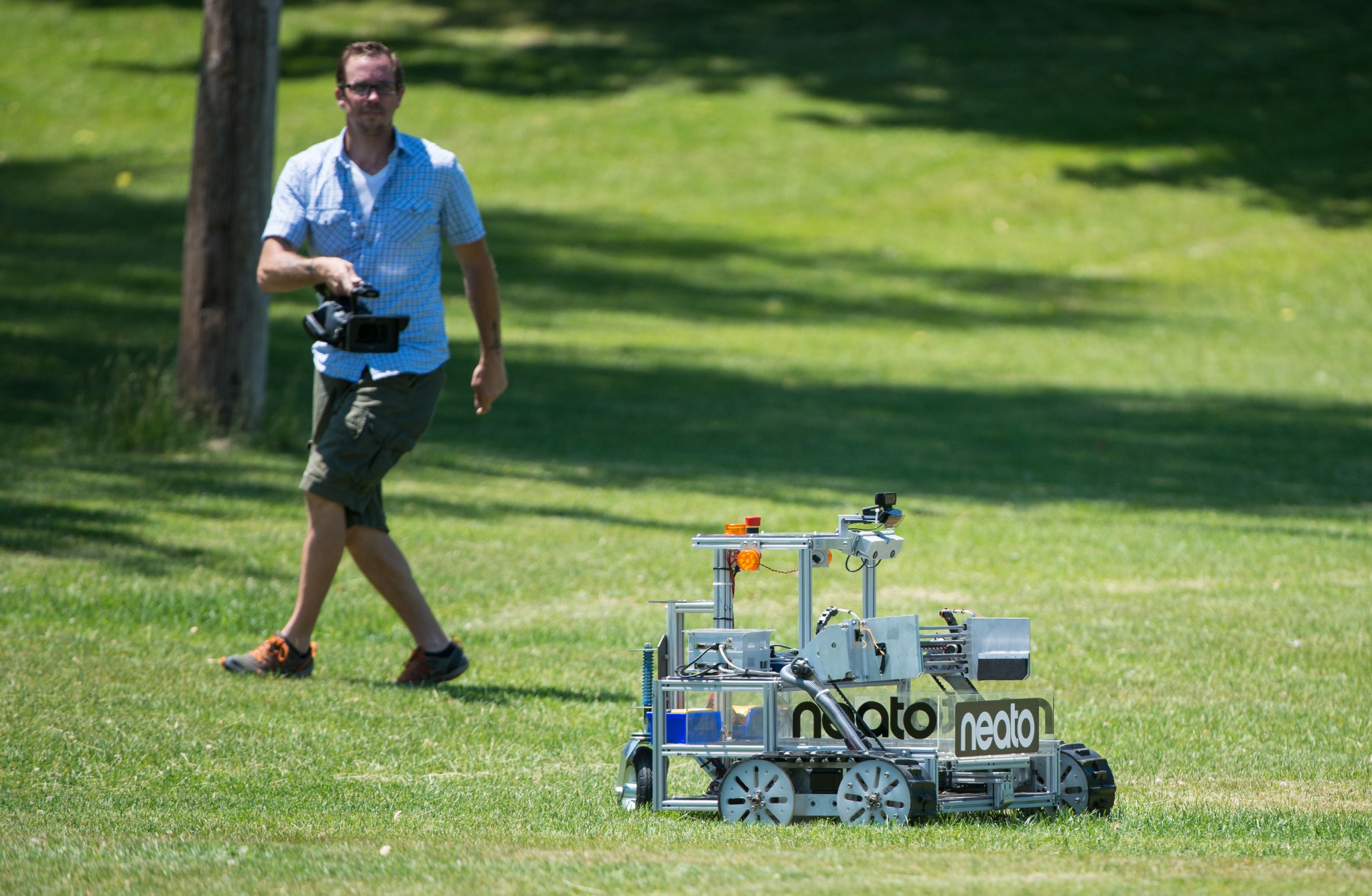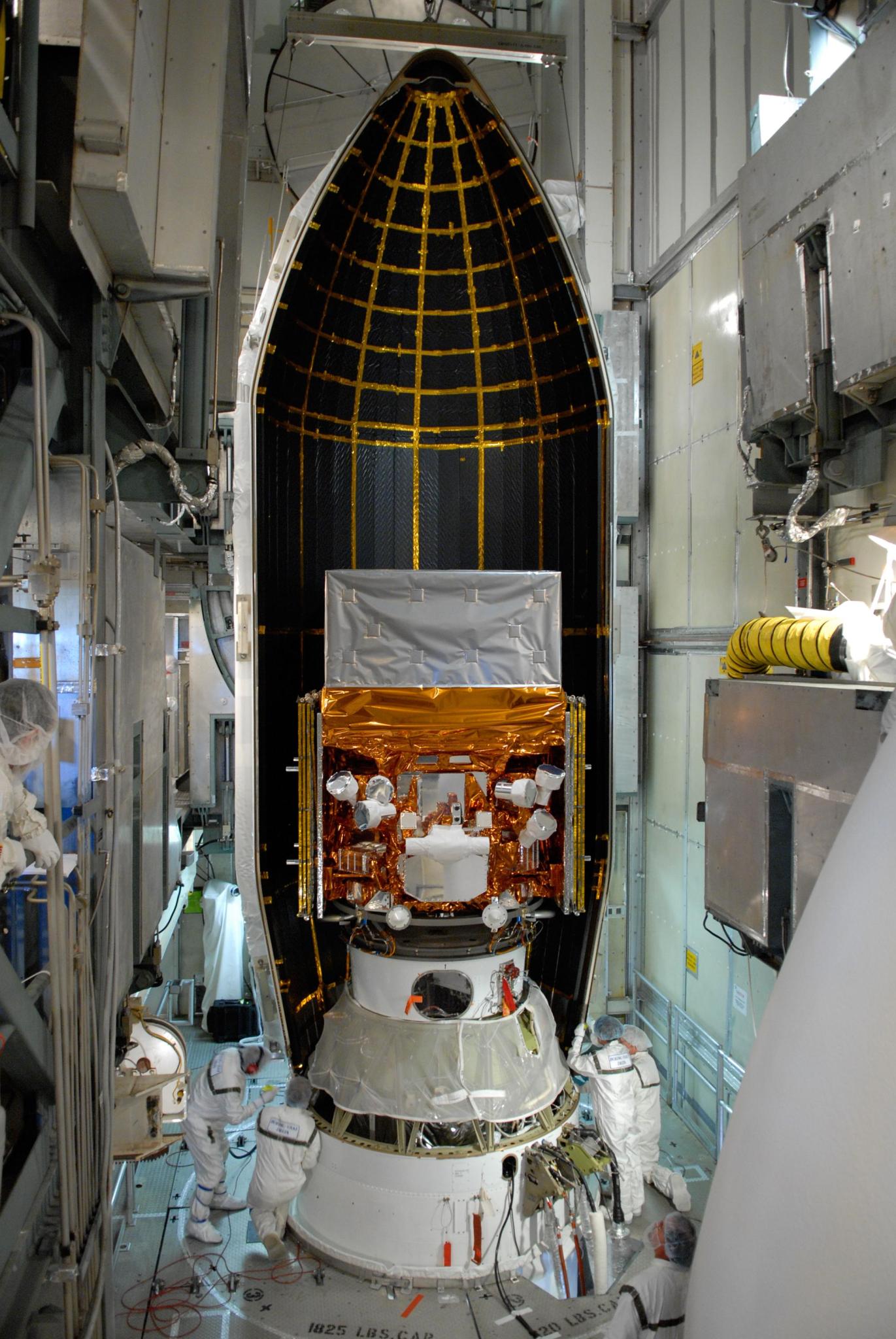In This Week’s Star
- As New Marshall Ombudsman, Nelson Parker Appreciates ‘Opportunity to Help People’
- Cheryl Harrell Brings Wealth of Experience to SLS Program Office
- Retired NASA Astronaut Scott Kelly Visits and Thanks Marshall Payload Operations Team for His Successful One-Year Science Mission
- Robotic Teams Gearing Up for Fifth Running of Sample Return Robot Challenge
- Marshall Director Todd May Takes Part in Tennessee Corridor National Summit
- Marshall Exchange’s Free ‘Summer Blast’ Social to Offer Burgers, Homemade Ice-Cream and More on June 9
- This Week in NASA History: Fermi Gamma-Ray Telescope Launches — June 11, 2008
As New Marshall Ombudsman, Nelson Parker Appreciates ‘Opportunity to Help People’
By Rick Smith
Nelson Parker, who since 2011 has been the Marshall Space Flight Center’s deputy chief engineer, now wears a second hat: Marshall ombudsman. And so far, it seems to fit him pretty well.
Parker smiles modestly at that suggestion, but said he does enjoy the role, and is eager to raise awareness of the free, confidential issue-resolution service it offers. “It’s an opportunity to help people, which is the most rewarding job you can take on in any career,” he said. “Certainly, the privilege of being associated with an exceptional group of chief engineers, working to solve complex technical issues across multiple projects, is rewarding as well, but in that environment, it can be hard to look back and confidently say, ‘I made a difference today.’ When you spend time helping people resolve difficult situations, however, there’s no question. That’s something special.”
Parker assumed his new post in May, joining Marshall’s other ombuds, Susan Cloud, special assistant to the director of the Office of Human Capital, who had been the center’s sole ombudsman since Pam Caruso retired in early 2016.
The NASA Ombuds Program serves all NASA civil servants and on-site contractors at each field center, providing an informal, independent and confidential means of seeking resolution of issues related to safety, mission success or organizational performance without fear of retaliation. It was established in 2004 in response to findings of the 2003 Columbia Accident Investigation Board, which recommended the agency supplement its formal issue-resolution methods with a more informal process.
Ombudsmen or ombuds — terms derived from the Swedish word for representative — are trained to listen to workers’ issues, explore options and weigh options for resolution. Engineers in particular are likely to appreciate the process, Parker said, which is “very similar to the way we work technical issues — understand the issue, brainstorm ideas, conduct and assess trades and weigh options to make an informed decision. That’s the core of what we do.”
How does an employee determine whether the NASA Ombuds Program is the right option for one’s issue or concern? NASA suggests setting up an appointment with an ombudsman if you aren’t familiar with the formal resources available to you; if you previously pursued formal means of resolution and believed the results were unfair or lacking in impartiality; or if you want to raise an issue anonymously.
“Our function is really to help people help themselves resolve a situation,” Parker said. “We’re an advocate for a fair process, a resource to ensure that individuals understand all their options and are best able to make an informed choice for themselves.”
A background in leadership
Parker, who began his NASA career in 1975 as a mass properties engineer in Marshall’s former Science and Engineering Directorate, has held a number of key posts during his tenure. In the 1980s, he was lead systems engineer for the International Space Station‘s U.S. Laboratory module, renamed Destiny for its 2001 launch to the orbiting research facility. He subsequently served in leadership roles within the former Systems Analysis & Integration Laboratory at the team, branch, division and laboratory levels. From 1999 to 2000, he was assistant to the director of Marshall’s Engineering Directorate; from 2000 to 2004 he was deputy manager and then manager of the Engineering Systems Department; and from 2004 to 2008, he was deputy manager of the Space Systems Department. He was deputy director for program assurance in Marshall’s Safety and Mission Assurance Directorate from 2008 to 2011, helping to lead the organization chiefly responsible for safety, reliability and quality assurance across the range of Marshall programs, projects and services.
He holds numerous awards for more than four decades of service, including a 1999 NASA Exceptional Service Medal for sustained performance characterized by unusual initiative or creative ability, and a 2005 NASA Outstanding Leadership Medal for his overall guidance, technical contributions and exceptional service to the agency.
Parker credits Cloud, who has been one of two appointed ombuds for Marshall for nearly a decade now, for her valuable insight and counseling. Team members are welcome to contact either ombudsman for help, he said, and Parker and Cloud collaborate as necessary on a case-by-case basis.
That partnership isn’t exclusive to Marshall. NASA’s roster of ombudsmen work together to the benefit of all, meeting monthly via videoconference and gathering in person a couple times a year for refresher training, Parker said. NASA ombuds also take part in the annual conference of the International Ombudsman Association, which supports ombuds practices and trains new ombudsmen among commercial and non-profit organizations, government entities and academic institutions worldwide.
“You never stop learning,” Parker said. “It’s incredibly rewarding to use that to the benefit of your teammates.”
To learn more about NASA’s Ombuds Program, click here or contact Parker or Cloud.
Smith, an ASRC Federal/Analytical Services employee, supports Marshall’s Office of Strategic Analysis & Communications.
Cheryl Harrell Brings Wealth of Experience to SLS Program Office
Cheryl L. Harrell has been named to the Senior Executive Service position of manager of the Program Planning and Control Office within the Space Launch System Program Office at NASA Marshall Space Flight Center.
Harrell brings more than 28 years of NASA experience to the position, where she will be responsible for formulating and executing all SLS resource plans and annual budget of approximately $2 billion.
Her responsibilities will also include implementing innovative and effective program management structures and governance plans and processes. Harrell will also serve as the liaison between the SLS Program, Marshall and NASA to develop resource requirements and implement budget and schedule controls to deliver SLS as the launch vehicle capable of fulfilling NASA’s performance requirements.
Managing budgets and resources is nothing new to Harrell. She joined Marshall’s Performance and Capabilities Management Office in the Office of Strategic Analysis and Communications in 2010 as team lead. In 2011, she was promoted to manager and was responsible for providing strategic budget analysis and assessments, capabilities management, strategic governance, performance measurement and assessment and program planning and control capability development and assessments across Marshall.
She began her NASA career in 1987 as a Cooperative Education student at NASA’s Langley Research Center. From 1987 to 1996, Harrell held a variety of positions within Langley’s Chief Counsel Office, Supersonic/Hypersonics Aerodynamics Branch and Research Facilities Branch. At Langley, she also served as a program/management analyst for the High-Speed Research Program and lead program analyst in the Aero-Performing Center Program Management Office from 1996 to 2002 and deputy project manager for Program Control and Operations for the Next Generation Launch Technology Airframe Project beginning in 2002.
In 2005, Harrell became deputy chief of Marshall’s Budget Integration and Analysis Office. She was the budget officer for the center’s $2.6 billion annual budget until 2007 when she returned to Langley as a program and institutional integration specialist in the Office of the Center Director.
For her service to NASA, she has received numerous honors and awards, including a NASA Exceptional Service Medal, NASA Exceptional Achievement Medal, NASA Administrative Achievement Medal, Space Flight Awareness Honoree Award, and multiple group achievement awards.
A graduate of St. Leo College in Hampton, Virginia, Harrell holds a bachelor’s degree in business administration. Harrell and her husband reside in Huntsville.
Retired NASA Astronaut Scott Kelly Visits and Thanks Marshall Payload Operations Team for His Successful One-Year Science Mission
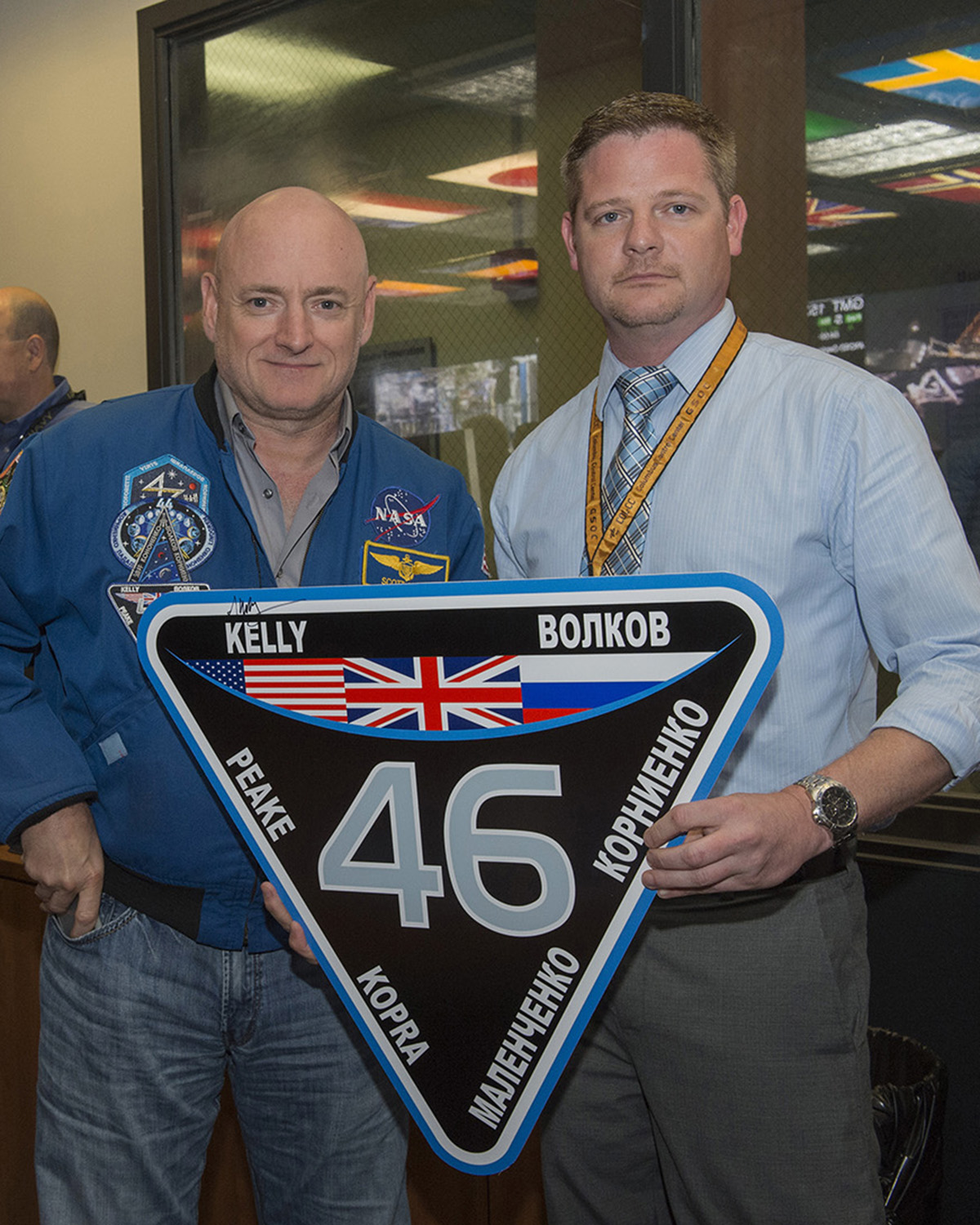
Retired NASA astronaut Scott Kelly, left, and Payload Planning Manager Tony Pittman pause for a photo before hanging the mission patch for Expedition 46 on the wall of the Payload Operations Integration Center — mission control for science on the International Space Station located at NASA’s Marshall Space Flight Center. Kelly met with members of the POIC team June 1 for a series of post-mission debriefings after his one-year stay on the space station. Including discussions with POIC flight controllers to breakdown the numerous investigations he worked on while in orbit from March 2015 to March 2016. During a short break in the meeting schedule, Kelly helped display the expedition insignia, thanking the many people there who helped make the mission a success. (NASA/MSFC/Emmett Given)
Robotic Teams Gearing Up for Fifth Running of Sample Return Robot Challenge
Twenty-one robotics teams are preparing their entries to compete for a fifth year in NASA’s Sample Return Robot Challenge. The autonomous robotic competition, which carries a total $1.5 million prize purse, is taking place place at Worcester Polytechnic Institute in Worcester, Massachusetts, in two stages, Level 1 from June 7-11 and Level 2 will take place from Sept. 2-5. The event, part of NASA’s Centennial Challenges prize program, is managed by WPI.
To be successful, teams must demonstrate an autonomous robot that can locate, collect and return geologic samples on natural terrain without human control and within a specified time. Levels 1 and 2 vary in allotted time and sample complexity. Teams must complete Level 1 objectives to be eligible for Level 2.
The objective of the challenge is to encourage innovations in autonomous navigation and robotic manipulation technologies. These innovations may enhance NASA’s space exploration capabilities and could have applications on Earth, continuing the nation’s leadership in robotic technology.
“For the past five years, we have witnessed a steady maturation of autonomous technology from the teams in this competition,” said Monsi Roman, program manager for Centennial Challenges at NASA’s Marshall Space Flight Center. “Significant advances in this challenge will not only aid NASA’s exploration of deep space, it will transform robotic capabilities on Earth.”
The teams come from diverse backgrounds, including university and high school students, small businesses, families and citizen inventors. Returning teams competing in Level 1 in June are:
- Army of Angry Robots of Silicon Valley, California
- Gather of Alexandria, Virginia
- MAXed OUT of San Jose, California
- Middleman of Dunedin, Florida
- Mind and Iron of Needham, Massachusetts
- National Autonomous University of Mexico City, Mexico
- Oregon State University of Corvallis
- Rensselaer Polytechnic Institute Rock Raiders of Troy, New York
- RoboRetrievers of Tampa, Florida
- Sirius of South Hadley, Massachusetts
- Smart Move of Clearwater, Florida
- Smart Tools of Gurnee, Illinois
- The Retrievers of Schenectady, New York
New teams competing in Level 1 are:
- 39e of Providence, Rhode Island
- Alabama Astrobotics of Tuscaloosa, Alabama
- Team AL of Canada
- PSU Robo Crew of Plattsburgh, New York
- Spark of Worcester, Massachusetts
- Svechdt of Claremont, New Hampshire
Teams are competing for a share of the $1.5 million prize purse, $1.39 million of which is still up for grabs. In 2013, NASA awarded $5,000 for Level 1 completion to Team Survey of Los Angeles, and to the West Virginia University Mountaineers of Morgantown in 2014. In 2015, WVU was awarded $100,000 for points earned in Level 2. Both teams are eligible to begin the 2016 competition at Level 2 in September.
The Sample Return Robot Challenge is managed by NASA’s Centennial Challenges program, part of the agency’s Space Technology Mission Directorate. Through such challenges, STMD gathers the best and brightest minds in academia, industry and government to drive innovation and enable solutions in important technology focus areas.
To view a live video feed of the Level 1 competition on competition day, click here.
For more information about the Sample Return Robot Challenge, click here.
Marshall Director Todd May Takes Part in Tennessee Corridor National Summit
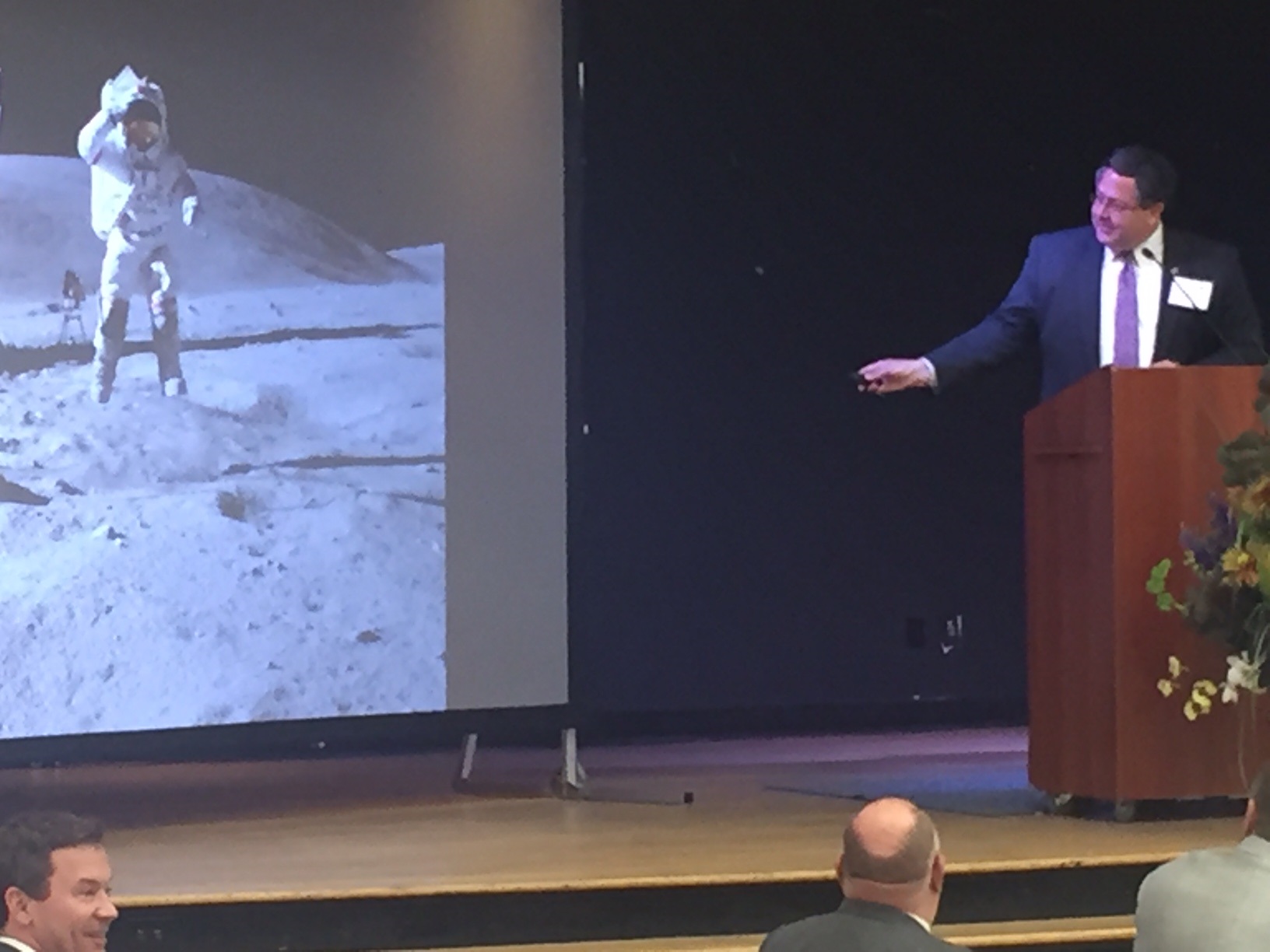
Looking from past to present, from the Apollo-era moon landings to the future of NASA’s Space Launch System, the journey to Mars and new human exploration of the solar system, NASA’s Marshall Space Flight Center Director Todd May addresses an audience of industry leaders and business representatives at the annual Tennessee Valley Corridor National Summit, held June 1-2 on the campus of Tennessee Tech University in Cookeville. (MSFC/Chris Randall)
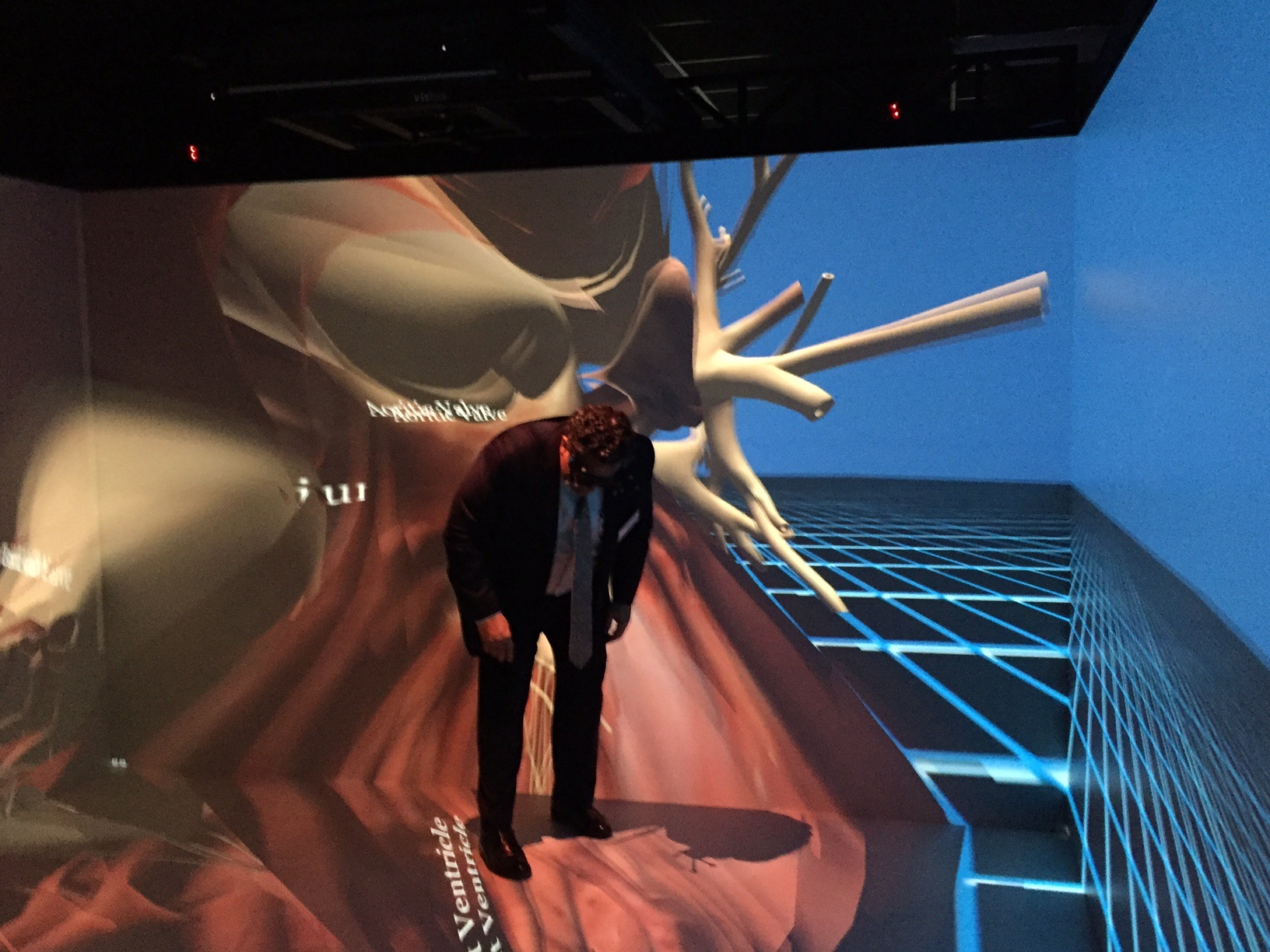
Touring Tennessee Tech during the Tennessee Valley Corridor National Summit, Marshall Director Todd May explores a diseased human heart via the iCUBE virtual-reality teaching unit in the university’s MakerSpace laboratory, a state-of-the-art research lab specializing in VR technologies and 3-D printing. Such technologies could be critical to NASA’s next generation of space missions, potentially enabling a variety of high-tech research capabilities and permitting solar-system explorers to print their own tools and replacement parts in space instead of waiting for shipments from Earth. (MSFC/Chris Randall)
Marshall Exchange’s Free ‘Summer Blast’ Social to Offer Burgers, Homemade Ice-Cream and More on June 9
It’s summertime, and if the livin’ isn’t easy it will at least be full of fun on June 9 during the Marshall Exchange’s “Summer Blast” social. The free event — open to all NASA employees and contractors — will be from 3 to 5:30 p.m. at the walking trails behind the Wellness Center, Building 4315, on Digney Road.
In addition to music, door prizes, volleyball and other games, the Exchange will have 1,000 burgers, 600 hot dogs, 60 veggie burgers, 500 orders of funnel cake fries and a mountain of shaved ice for free on a first-come-first-serve basis. There will also be chips and sodas, and the return of the homemade ice cream contest. Beer and wine will also be available for $1.
In the event of bad weather, the Great Exchange Summer Blast events will be held in the Activities Building, 4316, on Digney Road.
For more information, click here.
This Week in NASA History: Fermi Gamma-Ray Telescope Launches — June 11, 2008
This week in 2008, the Fermi Gamma-Ray Space Telescope, formerly Gamma-ray Large Area Space Telescope, a major NASA mission dedicated to observations of high-energy gamma rays, launched. The Gamma-ray Burst Monitor, which is a collaborative effort between the National Space Science and Technology Center and the Max Planck Institute for Extraterrestrial Physics in Germany, complements the Large Area Telescope with its observations of transient sources and is sensitive to X-rays and gamma rays with energies between 8,000 and 40,000,000 electron volts. NASA’s Marshall Space Flight Center manages the National Space Science and Technology Center, which is based on the campus of the University of Alabama in Huntsville. NASA’s exploration spans the universe, observing the sun and its effects on Earth; delving deep into our solar system; looking beyond to worlds around other stars; and probing the mysterious structures and origins of our universe. The NASA History Program is responsible for generating, disseminating and preserving NASA’s remarkable history and providing a comprehensive understanding of the institutional, cultural, social, political, economic, technological and scientific aspects of the agency’s activities in aeronautics and space. For more pictures like this one and to connect to NASA’s history, visit the History Program’s webpage. (NASA)


























